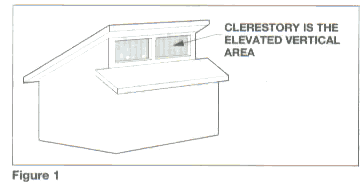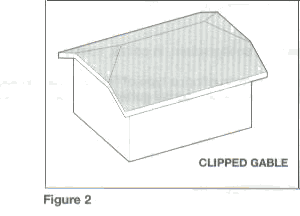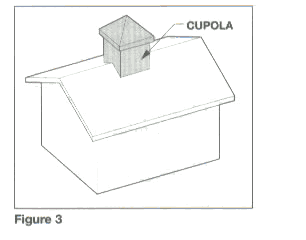Glossary of Roofing and Waterproofing Terms
C
A B C D E F G H I JK L M N OP R S T UV W-Z
CABO: Council of American Building Officials
Calender: a machine with two or more counter-rotating steel rollers used for laminating sheeting or skim coating (topping) to a controlled thickness or surface characteristic, or both.
Calendering: a manufacturing process by which some polymeric membranes and other sheetings are produced.
Camber: a slight convex curve of a surface, such as in a prestressed concrete deck.
Canopy: any overhanging or projecting roof structure, typically over entrances or doors. Sometimes the extreme end is unsupported.
Cant: a beveling of foam at a right angle joint for strength and water run off.
Cant Strip: a beveled or triangular-shaped strip of wood, wood fiber, perlite, or other material designed to serve as a gradual transitional plane between the horizontal surface of a roof deck or rigid insulation and a vertical surface.
Cap Flashing: usually composed of metal, used to cover or shield the upper edges of the membrane base flashing, wall flashing, or primary flashing. (See Flashing and Coping.)
Cap Sheet: a granule-surface coated sheet used as the top ply of some built-up or modified bitumen roof membranes and/or flashing.
Capacitance Meter: a device used to locate moisture or wet materials within a roof system by measuring the ratio of the change to the potential difference between two conducting elements separated by a nonconductor.
Capillary Action: the action that causes movement of liquids by surface tension when in contact with two adjacent surfaces such as panel side laps.
Catalyst: an ingredient in a coating of SPF which initiates a chemical reaction or increases the rate of a chemical reaction.
Cathodic: with regard to metal and galvanic response, cathodic metals are lower in the galvanic series. (May be protected by the more anodic metals.)
Caulk: a material (usually a composition of vehicle and pigment) used for filling/sealing joints or junctures, where no elastomeric properties are required. (See Sealant.)
Caulking: (1) the physical process of sealing a joint or juncture; (2) sealing and making weather-tight the joints, seams, or voids between adjacent units by filling with a sealant.
Cavitation: the vaporization of a liquid under the suction force of a pump, usually due to inadequate flow to a pump. The vaporization can create voids within the pump supply line. In SPF spray pumps, cavitation will result in off-ration foam.
Cavity Wall: a wall built or arranged to provide an air space within the wall (with or without insulating material), in which the inner and outer materials are tied together by structural framing.
CCF: 100 cubic feet.
C-Channel: a structural framing member.
Cementitious Waterproofing: heavy cement-based compounds and various additives that are mixed and packaged for use in a dry form; the packaged mixture is then mixed with water and liquid bonding agents to a workable concrete-like consistency.
Centipoise: a unit of measure of absolute viscosity. (Note: The viscosity of water is one centipoise. The lower the number, the less the viscosity.)
Centistoke: a unit of viscosity—the ratio of a liquid's absolute viscosity to the density of that liquid.
CERL: Construction Engineering Research Laboratory
Chalk: a powdery residue on the surface of a material.
Chalk Line: a line made on the roof by snapping a taut string or cord dusted with colored chalk. Used for alignment purposes.
Chalking: the degradation or migration of an ingredient, in paints, coatings, or other materials.
Channel Flashing: For steep-slope roof construction) a type of flashing used at roof-to-wall junctures and other roof-to-vertical plane intersections where an internal gutter is needed to handle runoff. Commonly used with profile tile.
Chemical Resistance: the ability to withstand contact with specified chemicals without a significant change in properties.
Chevron: a style of metal panel seaming/design.
Chimney: stone, masonry, prefabricated metal, or a wood framed structure, containing one or more flues, projecting through and above the roof.
Chlorinated Polyethylene (CPE): a thermoplastic material, used for single-ply roof membranes, composed of high molecular weight polyethylene which has been chlorinated—a process that yields a flexible rubber-like material.
Chlorosulfonated Polyethylene (CSPE or CSM): (probably best known by the DuPont trade name Hypalon™) a synthetic, rubber-like thermoses material, based on high molecular weight polyethylene with suphonyl chloride, usually formulated to produce a self-vulcanizing membrane. Classified by ASTM Standard D 501 9-89.
Cladding: a material used as the exterior wall enclosure of a building.
Cleat: a metal strip, plate or metal angle piece, either continuous or individual ("clip"), used to secure two or more components together.
Clerestory: an upward extension of enclosed space created by carrying a setback vertical, wall (typically glazed) up and through the roof slope. Two intersecting shed roofs on different planes. (See Figure 1.)
Clip: an individual (discrete) cleat. (See Cleat.)
Clipped Glable: a gable cutback at the peak in a hip-roof form. (See Figure 2.)
Closed-Cut Valley: a method of valley application in which shingles from one side of the valley extend across the valley while shingles from the other side are trimmed back approximately 2 inches (51 mm) from the valley centerline.
Closure Strip: a metal or resilient strip, such as neoprene foam, used to close openings created by joining metal panels or sheets and flashings.
Coal Tar: a dark brown to black colored, semi-solid hydrocarbon obtained as residue from the partial evaporation or distillation of coal tars. Coal tar pitch is further refined to conform to the following roofing grade specifications:
- Coal Tar Bitumen: a proprietary trade name for Type lil coal tar used as the dampproofing or waterproofing agent in dead-level or low-slope built-up roof membranes, conforming to ASTM D 450, Type lilt
- Coal Tar Pitch: a coal tar used as the waterproofing agent in dead-level or low-slope built-up roof membranes, conforming to ASTM Specification D 450, Type I or Type lilt
- Coal Tar Waterproofing Pitch: a coal tar used as the dampproofing or waterproofing agent in belowgrade structures, conforming to ASTM Specification D 450, Type II.
Coal Tar Felt: a felt that has been saturated with refined coal tar.
Coal Tar Roof Cement: a trowelable mixture of processed coal tar base, solvents, mineral fillers and/or fibers. Classified by ASTM Standard D 4022 Coal Tar Roof Cement.
Coarse Orange Peel Surface Texture: a surface showing a texture where nodules and valleys are approximately the same size and shape. This surface is acceptable for receiving a protective coating because of the roundness of the nodules and valleys. The theoretical covering rate cannot be used without adding a minimum of 25% additional material.Coated Base Sheet: a felt that has previously been saturated Hilled or impregnated) with asphalt and later coated with harder, more viscous asphalt, which greatly increases its impermeability to moisture.
Coated Fabric: fabrics that have been impregnated and/or coated with a plastic-like material in the form of a solution, dispersion hot-melt, or powder. The term also applies to materials resulting from the application of a preformed film to a fabric by means of calendering.
Coated Felt (Sheet): (1) an asphalt-saturated felt that has also been coated on both sides with harder, more viscous "coating" asphalt; (2) a glass fiber felt that has been simultaneously impregnated and coated with asphalt on both sides.
Coating: a layer of material spread over a surface for protection or decoration. Coatings for SPF are generally liquids, semi-liquids, or mastics; spray, roller, or brush applied; and cured to an elastomeric consistency.
Cobwebbing: a phenomenon observed during spray application characterized by the formation of web-like threads along with the usual droplets leaving the spray gun nozzle.
Coefficient of Thermal Expansion: a mathematical formulation used to predict the change in dimension (typically length) of a material as a function of temperature change.
Cohesion: the degree of internal bonding of one substance to itself.
Coil Coating: the application of a finish to a coil of metal using a continuous mechanical coating process.
Cold Flow: relatively slow deformation of a material at or below room temperature. (See Creep).
Cold Forming: the process of using press brakes, roll farmers, etc., to shape metal into desired profiles at ambient room temperature.
Cold Process Built-Up Roof: a continuous, semi-flexible roof membrane, consisting of a ply or plies of felts, mats or other reinforcement fabrics that are laminated together with alternate layers of liquid-applied (usually asphalt-solvent based) roof cements or adhesives installed at ambient or a slightly elevated temperature.
Cold Rolled: the process of forming steel into sheets, panels, or shapes on a series of rollers at ambient room temperatures.
Collector Box: see Conductor Head.
Color Stability: the ability of a material to retain its original color.
Column: a primary structural member used in a vertical position in a building to transfer loads from horizontal structural members (e.g., main roof beams, trusses, or rafters) to the foundation/footing.
Combing Ridge: a term used to describe an installation of finishing slate at the ridge of a roof whereby the slates on one side project beyond to the apex of the ridge.
Combustible: capable of burning.
Compatible Materials: two or more substances that can be mixed, blended, or attached without separating, reacting, or affecting the materials adversely.
Composition Shingle: a unit of asphalt shingle roofing.
Compounded Thermoplastics: a category of roofing membranes made by blending thermoplastic resins with plasticizers, various modifiers, stabilizers, flame retardants, UV absorbers, fungicides, and other proprietary substances, alloyed with proprietary organic polymers. Some of the membranes listed in this generic category are CPA, EIP, NBP, and TPA.
Compressive Strength: the ability of materials and components to resist deformation or other damage caused by the weight of compression of either live or dead loads.
Concealed-Nail Method: a method of asphalt roll roofing application in which all nails are driven into the underlying course of roofing and covered by an adhered, overlapping course.
Condensate: the liquid resulting from the condensation of a gas or vapor.
Condensation: the conversion of water vapor or other gas to liquid state as the temperature drops or atmospheric pressure rises. (Also see Dew Point.)
Conditioning: the exposure of a material to the influence of a prescribed atmosphere for a stipulated period of time or until a stipulated relation is reached between material and atmosphere.
Conductance, Thermal: the thermal transmission in unit time through unit area of a particular body or assembly having defined surfaces, when unit average temperature difference is established between the surfaces. C=Btu/h~ft2~°F.
Conductor Head: a transition component between a through-wall scupper and downspout to collect and direct run-off water.
Construction Joint: a formed or assembled joint at a predetermined location where two successive placements of concrete meet.
Contact Cements: adhesives used to adhere or bond various roofing components. These adhesives adhere mated components immediately on contact of surfaces to which the adhesive has been applied.
Contamination: the process of making a material or surface unclean or unsuited for its intended purpose, usually by the addition or attachment of undesirable foreign substances.
Coping: the covering piece on top of a wall which is exposed to the weather, usually made of metal, masonry, or stone. It is preferably sloped to shed water back onto the roof.
Copolymer: the product of polymerization of two or more substances at the same time; a "mixed" polymer.
Copolymerization: a chemical reaction that results in the bonding of two or more dissimilar monomers to produce large, long-chain molecules which are copolymers.
Copper: a natural weathering metal used in metal roofing; typically used in 16 or 20 ounce per square foot thickness (4.87 or 6.10 kg/sq m).
Cornice: the decorative horizontal molding or projected roof overhang.
Counter Batten: vertical wood strips installed on sloped roofs over which horizontal battens are secured. The primary roof covering is attached or secured to these horizontal battens.
Counterflashing: formed metal sheeting secured on or into a wall, curb, pipe, rooftop unit, or other surface, to cover and protect the upper edge of the membrane base flashing or underlying metal flashing and associated fasteners from exposure to the weather.
Course: (1) the term used for each row of shingles of roofing material that forms the roofing, waterproofing, or flashing system; (2) one layer of a series of materials applied to a surface (e.g., a five-course wall flashing is composed of three applications of roof cement with one ply of felt or fabric sandwiched between each layer of roof cement.)
Cove: see Fillet.
Cover Plate: a metal strip sometimes installed over the joint between formed metal pieces.
Coverage: the surface area covered by a specific quantity of a particular material.
CPA: Copolymer Alloy.
CPE: Chlorinated Polyethylene.
Crack: a non-linear separation or fracture occurring in a material. May be generally caused by induced stress, dimensional instability, or substrate movement. Some cracks may be more of a linear separation or fracture. (See Split.)
Cream Time: time in seconds (at a given temperature) when the A and B components will begin to expand after being mixed.
Creep: the permanent deformation of a roofing material or roof system caused by movement of the roof membrane, or compression of a roof insulation board at fastener positions, that results from continuous load or thermal stress or loading. Creep at roof temperature is sometimes called "cold flow."
Cricket: an elevated roof substrate or structure, constructed to divert water around a chimney, curb, away from a wall, expansion joint, or other projection/penetration. (See Saddle.)
Cross-Linking: the formation of chemical bonds between polymeric chains to yield an insoluble, three dimensional polymeric structure. Cross-linking of rubber is referred to as vulcanization or "curing."
Cross Ventilation: the effect that is provided when air moves through a roof cavity between the vents.
CRREL: Cold Regions Research and Engineering Laboratory
Crystalline Waterproofing: a compound of cement, quartz or silica sand, and other active chemicals that are mixed and packaged for use in a dry powder form; the packaged mixture is then mixed with water and applied to a concrete surface where it penetrates into the pores of concrete.
CSI: Construction Specifications Institute
CSM: ASTM designation for chlorosulfonated polyethylene. (See CSPE.)
CSPE: chlorosulfonated polyethylene.
Cupola: a relatively small roofed structure, generally set on the ridge or peak of a main roof area. (See Figure 3.)
Curb: (1) a raised member used to support roof penetrations, such as skylights, mechanical equipment, hatches, etc. above the level of the roof surface; (2) a raised roof perimeter relatively low in height.
Cure: a process whereby a material is caused to form permanent molecular linkages by exposure to chemicals, heat, pressure, and/or weathering.
Cure Time: the time required to effect curing. The time required for a material to reach its desirable long-term physical characteristics.
Cured Concrete: concrete that has attained its intended design performance properties.
Curing Agent: an additive in a coating or adhesive that results in increased chemical activity between the components with an increase or decrease in rate of cure.
Curing Compound: a liquid that is sprayed or otherwise applied to newly placed concrete which retards the loss of water during curing.
Cutback: solvent-thinned bitumen used in cold-applied ("process") roofing adhesives, roof cements, and roof coatings.
Cutoff: a permanent detail designed to seal and prevent lateral water movement in an insulation system, and used to isolate sections of a roofing system. (Note: A cutoff is different from a tie-off, which may be a temporary or permanent seal.) (See Tie-Off.)
Cutout: the open portions of a strip shingle between the tabs. (See Figure 4.)



